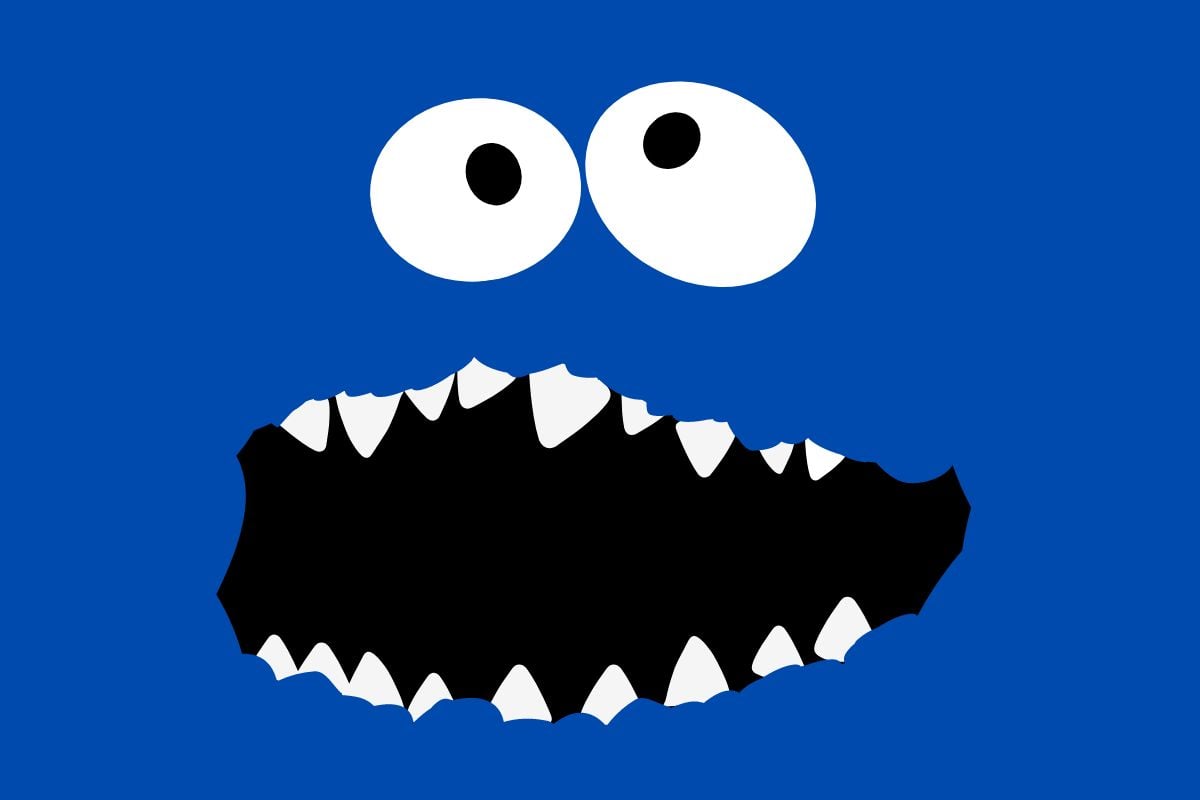While writing about Sesame Workshop’s disappointing decision to engage with NFTs, I did yet another deep dive into the world of Sesame Street. Somewhere between reading about Cookie Monster‘s history and Jim Henson’s anticapitalist leaning, I discovered that the blue creature with refined-yet-simple dessert tastes actually used to have teeth. Not just any teeth, either. Two rows of sharp chompers.
Before The Jim Henson Company (JHC) was known for Sesame Street, The Muppets Franchise, and a number of fantasy films like Dark Crystal and Labyrinth, the puppeteers were making ads and filling in skits slots on late night/variety shows. For one, this connects The Not-Too-Late Show with Elmo to larger Muppet/puppet history. But this also means there are a lot of characters created by the company that premiered in ads and other work first. Or in some cases, an earlier version debuted in an advertisement but morphed into another character.
Origins of the Cookie Monster of our nightmares

Originally called the “Wheel Stealer,” Cookie Monster was created to sell snack products for General Foods Canada in 1966. The company wanted JHC to create three distinct puppets for each of the three snack products: Wheels, Crowns, and Flutes. The idea was that the deliciousness of the snacks would attract monsters to devour the treats. This test commercial didn’t just result in the creation of Cookie Monster/The Wheel Stealer. It also marked a major development in JHC’s construction of their puppets. Puppet builder Don Sahlin designed a puppet that could appear to pick up and eat something.
Later, the JHC would pull out Cookie Monster/The Wheel Stealer in ads for Frito Lay and (a green version) computer giant IBM. All of this can be found on the archiving site Jim Henson’s Red Book. The site has pages and pages of notes, photos, and original sketches, courtesy of The Jim Henson Company Archives.
While not been confirmed by JHC, fans created a theory for how he went from Wheel Stealer to Cookie Monster. That is, Cookie Monster’s teeth from his days shilling for Big Cookie fell out after consuming too many snacks. The implication of consequential cavities only further humanizes our cookie king.
His moniker of the Cookie Monster means he didn’t learn his lesson and is still addicted to cookies. In a 2015 interview, Frank Oz (who voiced Cookie Monster for 32 years) confirmed the creature would choose a single cookie over $10,000 or a trip to Hawai’i. With the exception of one 1974 PSA, this stayed the same for 35 seasons of the show. In an effort to respond to burgeoning reports on childhood obesity, the show shifted its approach to cookie consumption. In 2005, the Cookie Monster began to consume fruit regularly. Albeit with lots of hesitation.
Paying the bills as an artist
Cookie Monster wasn’t the only recognizable Muppet with a stint in advertising. An earlier-looking (and sounding) Kermit makes an appearance in a Wilkin’s Coffee commercial. Though technically, these characters were officially called Wilkins & Wonkins and Scoop & Skip. Kermit was already doing drag (stage name Kermeena) on late night. While it never aired, JHC developed a proto-Big Bird for a Stouffer’s frozen food ad. After premiering in an episode of The Ed Sullivan Show, an earlier-looking “Anything Orange”-styled Muppet called Conrad Love appeared in a PSA from the Federal Housing Administration. One of my favorites—this Aurora Bath Tissue commercial—actually looks more inspired by the Adams Family‘s Thing than another Muppet.
The short time Henson spent doing commercial work before delving into his dream projects is remarkable to see. While not every artist has the political leanings of Henson, all want just to make art that invokes a human response without sinking beneath the weight of the financial realities of being an artist. Many find this balance by starting in advertising and making marketing work for others.
Jim Henson and other creatives at his company followed the part-time work, part-time pleasure model by making 25 sketches for The Ed Sullivan Show between their commercial work. They were able to do this long enough that they were seen by the right people. So they could pivot to their idea of a fulfilling career—creating stories and characters that everyone could relate to in some way. The best part is that you can see the love, humor, and creative style, regardless of the audience.
(Featured image: Jim Henson Company/General Foods remixed by Alyssa Shotwell)










Published: Mar 26, 2023 11:27 am